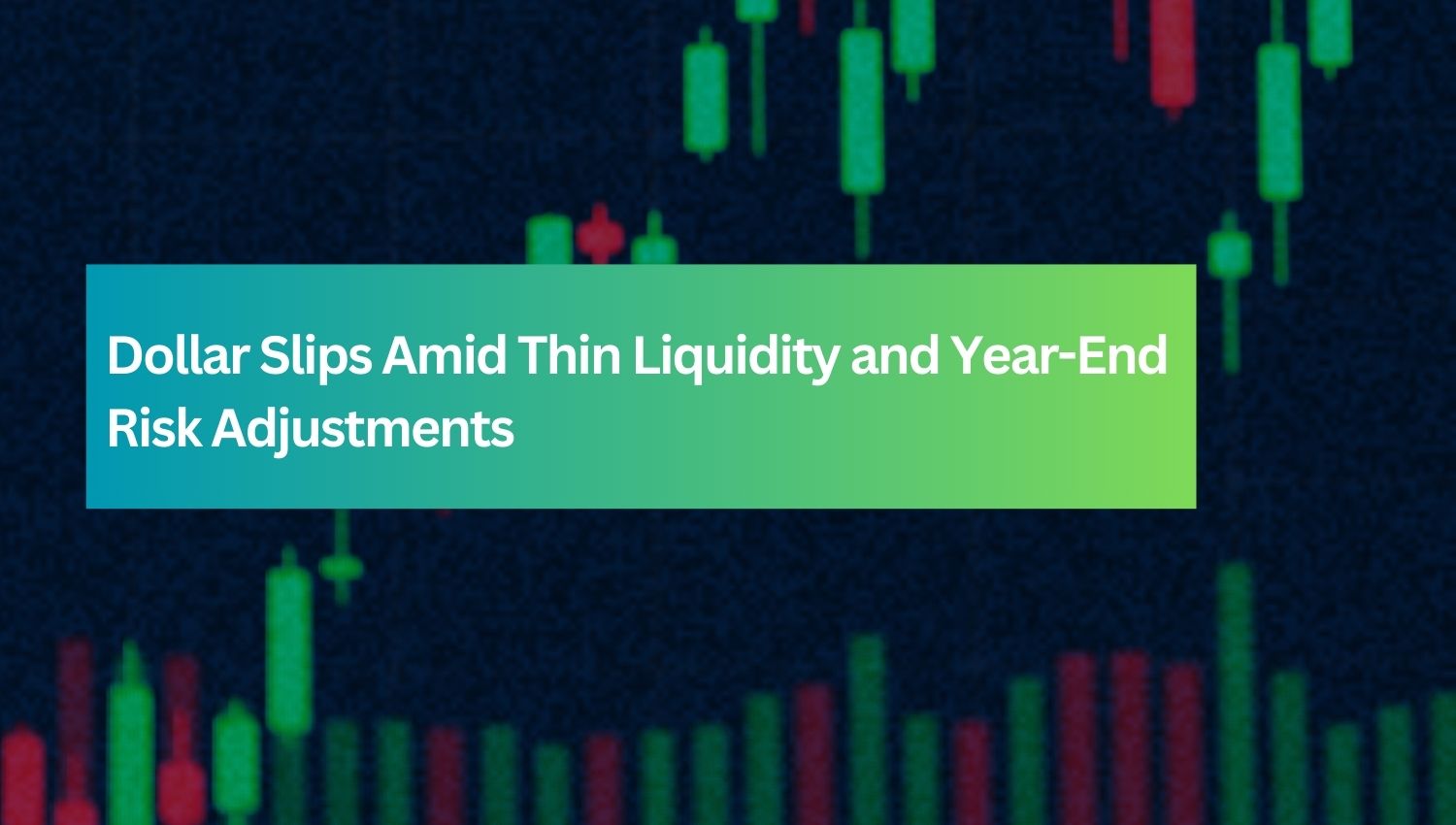Dollar Weakens on Mixed U.S. Data and Year-End Flows

The dollar edged lower heading into the weekend as traders adjusted positions amid thin holiday liquidity and year-end risk aversion. The U.S. goods trade deficit widened to $102.86 billion in November, exceeding expectations, while wholesale inventories declined and retail inventories rose, sending mixed signals about the economic outlook. A steepening Treasury yield curve and softer U.S. equities added pressure on the greenback, though year-end flows provided some support.
Global Developments: BOJ Signals Shift, China’s Growth Concerns Persist
Japan’s Tokyo inflation data showed acceleration, fueling speculation about a potential Bank of Japan (BOJ) rate hike. The BOJ’s decision to cut monthly bond purchases further hinted at a potential policy pivot. In China, industrial profits narrowed their decline, but concerns about 2024 growth dampened risk sentiment. These developments kept the yen steady against the dollar and weighed on commodity-linked currencies.
Mixed Sentiment in Commodities and Sterling
Sterling traded near trend lows but remained firm as traders positioned cautiously ahead of the new year. Commodity-linked currencies, such as the Australian dollar, were weighed down by weaker copper and iron ore prices, though a rebound in oil provided temporary relief. Soft risk sentiment and dovish Reserve Bank of Australia (RBA) outlooks capped gains for the Aussie dollar.
Market Outlook: Central Banks and Economic Risks Set the Stage for 2024
Heading into 2024, markets remain focused on central bank policies and global economic risks:
U.S.: Softer consumer confidence and durable goods data support the case for gradual Fed easing in 2024, though elevated Treasury yields reflect persistent inflation concerns.
Japan: BOJ policy dynamics remain critical, with inflation trends and verbal intervention shaping yen positioning.
Europe: The euro faces downside risks from weak growth sentiment, with limited upside unless economic conditions improve.
UK: Sterling may struggle unless U.K. data stabilizes, though near-term support levels could limit downside risks.
Commodities: Prices remain subdued, keeping commodity-linked currencies like the Australian dollar under pressure unless Chinese demand strengthens.
Currency Market Movements Reflect Mixed Sentiment
EUR/USD: Settled near 1.0425, supported by rising European yields but capped by dollar resilience.
USD/JPY: Eased slightly from session highs near 158.09 as verbal intervention and year-end flows moderated gains, though U.S.-Japan yield differentials provided underlying support.
GBP/USD: Tested resistance near 1.2576 but failed to break higher, reflecting mixed sentiment and pre-holiday caution.
AUD/USD: Hovered near its 2024 low of 0.6199, pressured by weak commodities and dovish RBA commentary, though holiday-thinned liquidity limited further declines.
Cross-Currency Pairs: Yen crosses like EUR/JPY and GBP/JPY mirrored broader trends, with risk-off sentiment capping upside potential.
Looking Ahead: Dollar Resilience Faces Year-End Risks
Dollar: Likely to remain supported by elevated Treasury yields and safe-haven demand, though holiday flows could lead to choppy price action.
Euro: Faces limited upside unless European sentiment improves, with key resistance levels likely to cap gains.
Sterling: Faces downside risks from weak U.K. data and global uncertainties but may find temporary stability at near-term support levels.
Yen: Could strengthen if BOJ signals a hawkish shift or verbal interventions intensify, though broader risk sentiment will remain a key driver.
Australian Dollar: Expected to stay under pressure unless commodity prices rebound or Chinese demand improves significantly.
Conclusion
Currency markets remain poised for volatility as year-end flows and thin liquidity amplify price movements. The dollar’s resilience reflects elevated yields and safe-haven demand, while the euro, yen, and sterling navigate regional economic challenges. Commodity-linked currencies remain vulnerable to weak demand and global risks, with market sentiment likely to be shaped by central bank commentary and incoming economic data as markets transition into the new year.

